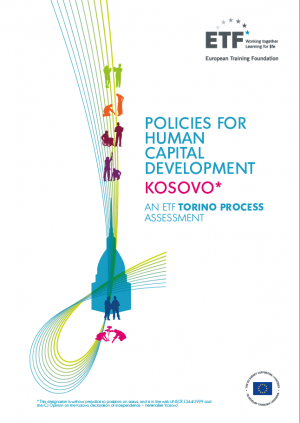Young people are a great asset to Kosovo. However, upon graduation from education and training, they face enormous challenges entering the labour market – a trend which is likely to persist for the years to come. However, demographic developments also suggest continuously declining birth rates and a rapidly shrinking working-age population in the mid to long term. While the former affects educational planning already today, the latter will affect the labour market tomorrow. In combination with the persisting emigration of young, skilled people, this could lead to serious supply-side constraints, which in turn would imperil further economic growth. Active measures to further improve skills supply and to increase labour market participation, including of young people and women, would present strategies to address these constraints.
The feeling around the country is that there are significant issues holding the country back from modernising its education system. One of the key problems is that teachers are continuously hired based on political party affiliation and that leadership positions are given as political favours. 'An example of a seemingly structural issue is that new teachers are recruited by two members of the municipal government and by the principal of a school. In this system, the municipalities have the final say in which teachers are hired; meanwhile, principals have expressed that their lack of autonomy makes it difficult to successfully lead a school. This politicization is one example of a myriad of systemic issues that need to be addressed for Kosovo's education system to excel' (Gashi, 2019).
Many public VET schools lack adequate facilities and teachers to develop the necessary practical skills of their students, while links with businesses are weak. One question is why the Kosovo government continues to invest in VET programmes for which there is no labour demand or that fail to produce the necessary skills. That said, there are highly practice-oriented training courses in (often donor-supported) training centres, where participants do acquire specific trade-related skills that help them find jobs. These centres, however, would require co-funding from government to make such training sustainable when donors leave.
One strategy to address the issue of poor resources of VET providers is to allow and enable them to generate and reinvest their own income. This could be embedded into an effort to generally give VET institutions more autonomy in terms of their staff, courses offered, budgets, premises, facilities and procurement decisions. Such a shift would require legal changes and agreed national frameworks of qualifications and quality assurance, transparency and accountability, within which providers would operate. In addition, such a shift would require national support in the form of new management tools, guidelines and capacity building for VET providers, for example for quality assurance, accounting and reporting.
Kosovo needs workers with hands-on skills. For example, as construction is booming thanks to investments from Kosovars working abroad, there is demand for people who are able to build frames or roofs, or do electrical or sanitary installations on building sites. It will remain difficult for people with the wrong or insufficient practical skills, even if they graduated from higher education, to find employment.
The general skills shortages in Kosovo call for the creation of more opportunities for adults to develop their skills. In view of the limited capacities of VTCs to respond to the demand of jobseekers, in particular low-skilled people, any VET institution that is well equipped to do so should be allowed to offer basic and vocational skills training to adults. A reorganisation of the network of VET institutions and their offers would contribute to making economies of scale and enhancing the relevance of VET programmes or courses. This would mean dismantling the boundaries between the two hitherto separately functioning systems of vocational education and vocational training. It means bringing all types of public VET providers under one legal framework and having AVETAE manage all VET institutions.
International donations, including those earmarked for education, VET and employment policies, are of a sizable nature. On the receiving end, we have people responsible in offices who have little power or will to take decisions. With a good deal of imagination, with a different understanding of the state serving the many instead of the few and with all donor funds being used purposefully, the situation in VET and people's skills to find jobs might be different. On the donors' end, there are issues of better coordination and the pointlessness of drafting and re-drafting papers, which are poorly matched with Kosovo's capacities and destined to be swiftly forgotten.
It appears that currently the political will to change the system is lacking. Education in Kosovo is much about improvisation. Present challenges and difficulties can only be overcome through dialogue and cooperation. That is why politicians, decision-makers, practitioners and members of civil society should come together at national and local levels to work on a long-term vision and plan for developing the human capital potential of Kosovo in a lifelong learning perspective.
